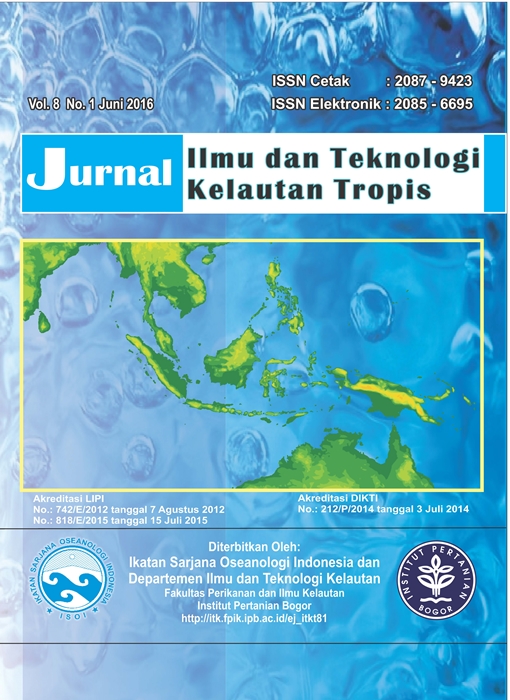TOTAL HEMOCYTES, GLUCOSE HEMOLYMPH, AND PRODUCTION PERFORMANCE OF SPINY LOBSTER Panulirus homarus CULTURED IN THE INDIVIDUAL COMPARTMENTS SYSTEM
Abstract
Cannibalism can cause high mortality in a lobster culture. To prevent cannibalism, an artificial shel-ter is needed like the individual compartments system (ICS) to ensure that there is no contact bet-ween lobsters. This study aimed to evaluate the application of ICS on total hemocytes glucose hemo-lymph, production performance, and determine the shape of more effective ICS to minimize stress level of lobster. The treatments used for various application shape of ICS was tubular ICS, triangle ICS, square ICS, and shelter PVC pipes as control. Lobster maintenance was conducted in outdoor for 60 days. The results indicated that physiological responses with square ICS treatment were more effective to reduce stress level compared with other treatments (p<0.05). Application of ICS was more optimal to improved SR (p<0.05) and growth of lobster (p>0.05). Overall, treatment of square ICS was opti-mal related to production performance i.e. SR 88.89±5.24%, SGR 0.61±0.49%/day, with harvest size of total length 137.31±8.11 mm/ind, weight 58.83±4.78 g/ind, and FCR 22.71±1.72. Application of ICS in lobster culture was effective to reduce stress level as indicated from total hemocytes and gluco-se hemolymph, and support optimal production performance. Lobster culture using a square ICS sha-pe was effective to minimize stress level, compared with tubular ICS and triangle ICS.
Keywords: cannibalism, glucose, hemocytes, individual compartments system, lobster, production
Authors
This work is licensed under a Creative Commons Attribution 4.0 International License.
Jurnal Ilmu dan Teknologi Kelautan Tropis i is an open-access journal, meaning that all content is freely available without charge to the user or their institution. Users are allowed to read, download, copy, distribute, print, search, or link to the full texts of the articles in this journal without needing to request prior permission from the publisher or the author.
All articles published by Jurnal Ilmu dan Teknologi Kelautan Tropis are licensed under the Creative Commons Attribution 4.0 International License. This allows for unrestricted use, distribution, and reproduction in any medium, provided proper credit is given to the original authors.
Authors submitting manuscripts should understand and agree that the copyright of published manuscripts is retained by the authors. Copyright encompasses the exclusive rights of authors to reproduce, distribute, and sell any part of the journal articles in all forms and media. Reproduction of any part of this journal, its storage in databases, and its transmission by any form or media is allowed without written permission from Jurnal Ilmu dan Teknologi Kelautan Tropis.


